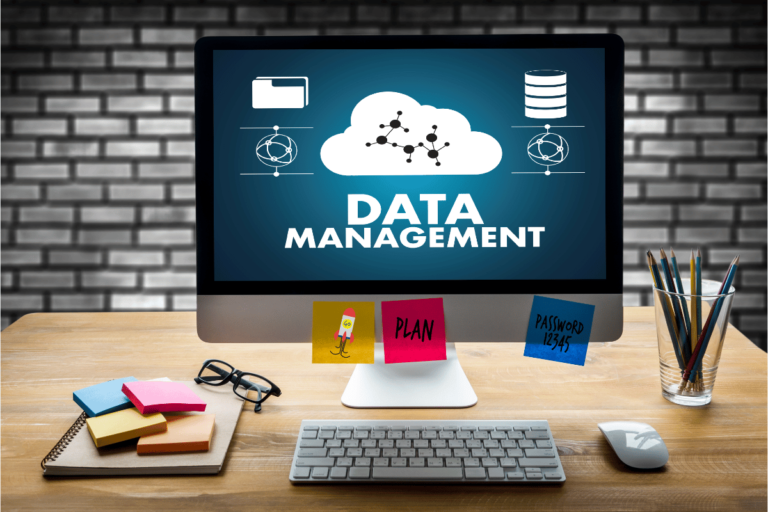Empowering Financial Decision-Making: The Role of Revenue Cycle Management Analytics
Cracking the Code of Revenue Cycle Analytics
Revenue cycle analytics is like the secret sauce for making smart financial moves, especially in healthcare. It’s all about digging into the financial processes that keep the cash flowing—from handling claims to getting paid and everything in between.
The Nuts and Bolts of Revenue Cycle Management
In healthcare, revenue cycle management (RCM) is a 17-step dance, starting from when a patient books an appointment to when the bill is finally settled. These steps fall into three main stages:
- Order to Intake – This is where patient registration and checking insurance eligibility happen.
- Care to Claim – Here, medical services are provided, and claims are created.
- Claim to Payment – The last leg involves submitting claims, posting payments, and chasing down any unpaid bills.
Each step needs to be on point to keep the revenue cycle smooth. Messing up can cost healthcare providers big time—think 5% to 10% of their revenue, according to the American Medical Association (Data Dynamics Inc.).
Why Revenue Cycle Analytics Matters
Revenue cycle analytics is a game-changer, especially now when costs are up and margins are thin. Getting a grip on RCM is crucial to cut down on unpaid claims and boost profits (R1 RCM).
The first step in using data analytics in RCM is understanding where your data comes from, how good it is, and how it’s structured. This sets the stage for successful data analytics in healthcare.
Many healthcare providers use data analytics to run top-notch RCM programs. This helps them report on quality care, patient happiness, and healthcare costs, making sure they get paid what they’re owed (RevCycle Intelligence).
Tech and automation have made RCM a lot easier. During the COVID-19 pandemic, 75% of hospitals and health systems jumped on the RCM tech bandwagon (RevCycle Intelligence). With AI and automation, providers can handle prior authorizations and other RCM tasks more efficiently (RevCycle Intelligence).
By getting a handle on revenue cycle analytics, organizations can make smarter decisions that boost their financial health and streamline operations. For more tips and tricks, check out our section on revenue cycle analytics.
Key Metrics in Revenue Cycle Analytics
Revenue cycle management analytics is like the financial heartbeat of healthcare. It keeps the cash flowing and the lights on. Let’s break down four must-watch metrics: Days in Account Receivable, Clean Claim Rate, Claim Denial Rate, and Revenue per Patient Visit.
Days in Account Receivable
Days in Account Receivable (AR) is all about how quickly you get paid. The fewer days it takes, the better your cash flow.
| Metric | Description |
|---|---|
| Days in AR | Average number of days to receive payments |
Want to speed things up? Tighten up payment plans and give folks a reason to pay early. Keeping an eye on this number helps you spot billing hiccups before they turn into cash flow nightmares. For more tips, check out our revenue cycle analytics page.
Clean Claim Rate
The Clean Claim Rate measures how many of your claims sail through without a hitch. No errors, no rejections, just smooth sailing.
| Metric | Description |
|---|---|
| Clean Claim Rate | Percentage of claims submitted without errors |
A low clean claim rate means you’re leaving money on the table. Regular check-ups on this metric can help you fine-tune your billing process and get paid faster. Dive deeper into this topic in our healthcare revenue cycle analytics article.
Claim Denial Rate
The Claim Denial Rate shows how many claims get the thumbs-down from insurance companies or patients. High denial rates can point to coding mistakes, missing info, or insurance issues.
| Metric | Description |
|---|---|
| Claim Denial Rate | Percentage of claims denied |
Keeping this number low is key. Train your staff to catch errors before they happen and keep your revenue cycle running smoothly. For more on this, visit our revenue cycle analytics software section.
Revenue per Patient Visit
Revenue per Patient Visit tells you how much money you make each time a patient walks through the door. It’s a handy metric for forecasting and spotting revenue trends.
| Metric | Description |
|---|---|
| Revenue per Patient Visit | Average revenue generated per visit |
Tracking this helps you plan for the future and manage resources better. Knowing when to expect cash flow dips can save you a lot of headaches. For more insights, head over to our revenue cycle performance analytics page.
By keeping tabs on these key metrics, you can fine-tune your revenue cycle management and boost your financial health.
Using Data Analytics to Boost Revenue Cycle Management
Data analytics is a game-changer for improving revenue cycle management (RCM), especially in healthcare. By tapping into analytics, organizations can boost their financial health and streamline operations.
How Data Analytics Impacts RCM
Using data analytics can make a big difference in key parts of the revenue cycle. For example, healthcare providers using analytics see a 10-15% bump in clean claim rates and a 20-30% drop in claim denials. This helps increase profit margins, which is crucial given the rising costs in healthcare (R1 RCM).
| Metric | Improvement (%) |
|---|---|
| Clean Claim Rate | 10-15 |
| Claim Denial Rate | 20-30 |
| Accounts Receivable Days | 20-30 |
Perks of Data-Driven RCM
Organizations using data analytics in RCM enjoy several perks:
- Better Financial Performance: Improved claim rates and fewer denials mean more revenue.
- Operational Efficiency: Cutting accounts receivable days by 20-30% helps manage cash flow better.
- Happier Patients: Data-driven strategies can enhance patient interactions, boosting satisfaction and loyalty (Data Dynamics Inc.).
- Clearer Insights: Organizations get a full view of their revenue cycle, tracking key metrics like cost to collect and claim rejection rates.
Tackling Implementation Hurdles
While the benefits are clear, implementing data analytics in RCM comes with challenges:
- Lack of Insight: Many healthcare providers can’t see their full revenue cycle, making optimization tough. The fix? Adopt solid revenue cycle analytics software for better insights.
- Data Overload: Managing tons of data can be overwhelming. Effective data management strategies can help focus on what’s important.
- Integration Issues: Merging new analytics tools with existing systems can be tricky. A phased rollout and thorough staff training can ease the process.
By tackling these challenges, organizations can use data analytics to improve their revenue cycle management, leading to better financial and operational outcomes. For more details on revenue cycle analytics, check out our section on revenue cycle performance analytics.
Future Trends in Revenue Cycle Analytics
As healthcare keeps changing, revenue cycle management (RCM) analytics is becoming more important for boosting efficiency, patient care, and financial results. Let’s dive into three big trends shaping the future of RCM analytics: predictive analytics, automation and AI, and real-world success stories.
Predictive Analytics in RCM
Predictive analytics is like having a crystal ball for healthcare. It uses past data to guess future outcomes, helping healthcare providers make smart decisions about staffing and resources. Imagine a hospital knowing exactly when they’ll be busiest and scheduling staff accordingly. This not only makes operations smoother but also makes patients happier by cutting down on wait times.
| Predictive Analytics Benefits | Description |
|---|---|
| Better Resource Allocation | Predict patient volumes and staff up accordingly. |
| Smarter Financial Planning | Forecast revenue based on expected patient visits. |
| Shorter Wait Times | Optimize operations during busy periods, making patients happier. |
Automation and AI in RCM
Automation and AI are shaking things up in healthcare. These tech tools help with everything from forecasting to making decisions, leading to more personalized and efficient patient care. Automation can handle boring admin tasks like billing and claims, freeing up healthcare workers for more important stuff. Meanwhile, AI can sift through mountains of data to spot trends and issues, making the revenue cycle more accurate and efficient.
| Automation and AI Benefits | Description |
|---|---|
| More Efficiency | Automate routine tasks, letting staff focus on bigger things. |
| Better Accuracy | Cut down on human errors in data entry and claims. |
| Improved Patient Interaction | Use AI to personalize communication and follow-ups, making patients happier. |
Success Stories and Case Studies
Real-life examples show how effective revenue cycle analytics can be. Take a healthcare system that used RCM analytics to fix claim denial issues. By analyzing data to find coding problems, they trained their staff better, leading to fewer denied claims, more revenue, and smoother operations.
Another example is a clinic that used RCM analytics software to streamline billing. By spotting patterns in billing errors, they cut down on claim rejections, improved cash flow, and made patients happier.
These stories show the power of revenue cycle analytics in making healthcare organizations run better. As the industry keeps embracing data-driven strategies, the future of RCM analytics looks bright, promising better efficiency and patient care.







